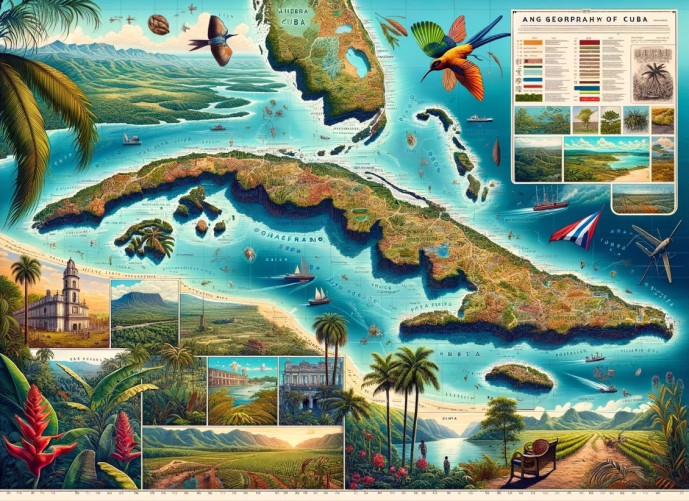Cuba’s Regions at a glance
Explore Cuba region by region: from Viñales to Baracoa

Western Cuba: History, Nature & Beaches
As the most visited part of the island, this region offers the classic Cuba experience. It is a compelling mix of vibrant city life, iconic rural landscapes, and expansive resort beaches, providing a comprehensive introduction to the country’s diverse character.
Havana
- The Vibe: Energetic, historic, and culturally rich. The vibrant capital.
- Known For: Old Havana’s colonial architecture, classic American cars, Malecón seawall, dynamic music and nightlife scene.
- Best For: Culture enthusiasts, history buffs, photographers, and first-time visitors.
Each of Havana’s neighborhoods offers a distinct atmosphere, from the meticulously restored colonial heart of Habana Vieja to the 20th-century elegance of Vedado and the stately diplomatic residences of Miramar.
Viñales Valley (Pinar del Río)
- The Vibe: Rural, tranquil, and breathtakingly scenic.
- Known For: Karstic limestone hills (mogotes), tobacco plantations, and cave systems.
- Best For: Nature lovers, hikers, and those interested in Cuba’s world-famous cigars.
The valley is an exceptional destination for outdoor pursuits. We can arrange guided horseback riding through the tobacco fields, visits to local farms to see the cigar-making process, and explorations of the region’s fascinating cave networks.
Varadero (Matanzas)
- The Vibe: All-inclusive resort hub with stunning beaches.
- Known For: A 20-km stretch of white sand beach, crystal-clear water, and large hotels.
- Best For: Travelers seeking a relaxing, conventional beach vacation.
Varadero is Cuba’s primary resort destination, offering a world-class beach experience that is quite distinct from the cultural and historical immersion found elsewhere. It is an ideal place to unwind at the beginning or end of your journey.
Central Cuba: Colonial Charm & Revolutionary History
This region is the colonial and historical heartland of the island. It is a perfect destination for travelers wishing to dig deeper into Cuba’s layered past, from its Spanish foundations to its revolutionary struggles.
Cienfuegos
- The Vibe: Elegant, clean, and with a distinct French architectural influence.
- Known For: Its UNESCO-listed historic center, beautiful bay, and neoclassical buildings.
- Best For: Architecture admirers and travelers looking for a more relaxed, polished colonial city.
Often called the “Pearl of the South,” Cienfuegos has a unique and refined character that sets it apart from other Cuban cities, thanks to its French heritage and well-preserved urban plan.
Trinidad
- The Vibe: A perfectly preserved colonial town with a lively, artistic atmosphere.
- Known For: Cobblestone streets, colorful houses, thriving live music scene (Casa de la Música), and proximity to Playa Ancón beach.
- Best For: History lovers, music and dance enthusiasts, and photographers.
Considered a living museum, Trinidad is a highlight of most cultural itineraries. Its combination of architectural beauty, vibrant musical traditions, and nearby natural attractions makes it an essential stop.
Santa Clara
- The Vibe: A bustling university city steeped in revolutionary history.
- Known For: The Che Guevara Mausoleum and Memorial, and the Tren Blindado monument.
- Best For: Those deeply interested in the history of the Cuban Revolution.
While a pleasant city in its own right, Santa Clara is primarily a key historical pilgrimage site. Its significance is tied directly to the final battles of the revolution, making it a place of great importance for understanding modern Cuba.
Eastern Cuba: Undiscovered & Afro-Cuban Soul
For the more adventurous traveler, the “Oriente” is a rugged, off-the-beaten-path region that serves as the cradle of Cuban music and revolution. Here you will find a different pace of life and a distinct cultural identity.
Camagüey
- The Vibe: A labyrinthine city with a strong independent and artistic character.
- Known For: Its maze-like streets (designed to confuse pirates), hidden plazas, and tinajones (large clay pots).
- Best For: Explorers who enjoy getting lost in a city and discovering local art.
Santiago de Cuba
- The Vibe: Passionate, rhythmic, and historically significant; Cuba’s second city.
- Known For: Being the birthplace of the revolution and many forms of Cuban music (Son, Bolero). Strong Afro-Cuban heritage.
- Best For: Music lovers and travelers interested in Afro-Cuban culture and revolutionary history.
Prepare for a hotter climate in Santiago. Its cultural identity is palpably different from Havana’s, with a more pronounced Caribbean feel and a deep connection to its Afro-Cuban roots.
Baracoa
- The Vibe: Isolated, tropical, and ecologically unique. Cuba’s oldest settlement.
- Known For: El Yunque flat-topped mountain, lush rainforests, unique cuisine (especially with coconut and cacao), and black sand beaches.
- Best For: Adventurous travelers, eco-tourists, and foodies wanting to try regional specialties.
Baracoa’s relative isolation, nestled between mountains and the sea, has helped preserve a unique environment and a distinct local culture. This is a destination for those seeking genuine adventure and a glimpse of a Cuba untouched by mass tourism.